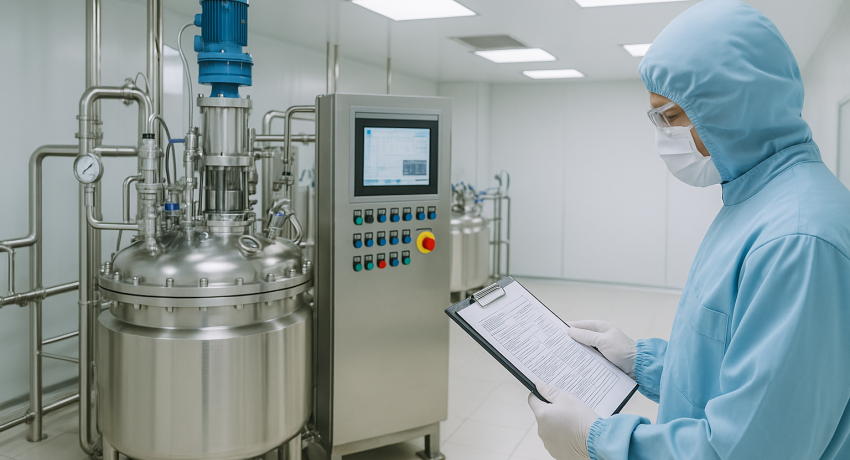
The FDA’s PreCheck program has transitioned from concept to implementation, and it is already reshaping how new drug-manufacturing facilities come online in the United States. As teams close out 2025 and lock in their priorities for 2026, this is the first time PreCheck sits squarely inside the design and budgeting cycle. That timing matters. Any organization planning a cleanroom or controlled-environment project next year will feel its influence.
Most public commentary focuses on on-shoring and supply-chain strategy. The more practical shift is simpler. PreCheck pulls the FDA into a project far earlier than many organizations are used to. Design choices, documentation habits, and operational-readiness planning all become visible long before construction is finished. If you have ever been part of a cleanroom build where details are sorted out late, you can already see how this changes the rhythm of the work.
What the Program Actually Does
PreCheck uses a two-stage structure that relies on a facility-specific Drug Master File (Type V).
In the first stage, manufacturers provide a DMF that explains the logic behind the facility design, the intended material and personnel flows, the quality system approach, and the risk controls that will guide day-to-day operations once the plant is operational. The FDA reviews this while the building is still under construction. Early comments enable teams to address issues before they become difficult-to-fix architectural decisions.
The second stage is directly connected to the drug application submission. With the facility information already on file, the agency can offer earlier feedback on CMC (Chemistry, Manufacturing, and Controls) and quality components. This reduces the likelihood of late-cycle friction and helps teams understand what the agency will expect in the future.
PreCheck is currently voluntary and focuses on new facilities and significant expansions. Even so, adoption is gaining momentum as organizations prepare their 2026 programs with this new model in mind.
Why This Matters for Cleanroom Projects
Anyone who has lived through a GMP buildout knows how often key decisions drift until the commissioning phase. PreCheck makes that approach risky. It changes expectations around timing and forces groups that frequently work independently to align earlier.
Documentation needs to mature sooner.
Cleanroom zoning, HVAC boundaries, contamination control strategies, and material and personnel flows cannot wait until late design reviews. These foundational choices must be captured clearly in the DMF. If they are not, the disconnect will become apparent early on when the agency begins reviewing the file.
True cross-functional alignment becomes an integral part of the design.
If Engineering imagines one flow and Operations imagines another, PreCheck will expose the gap. The program rewards teams that build a shared operational picture early in the project.
Construction execution becomes a compliance factor.
The way a project handles material staging, vendor oversight, protection of 316L components, and documentation during installation will influence how the FDA views the facility’s maturity. People who have watched projects slip because field practices varied from vendor to vendor know how quickly this can derail a schedule.
Existing plants remain on the traditional review path.
PreCheck does not change the process for brownfield renovations or incremental upgrades. Those facilities will continue through the standard inspection and post-approval system.
What Teams Should Do Now
As 2026 planning progresses, several actions can help organizations position themselves for PreCheck.
Assess readiness for early scrutiny.
If critical design work is conducted without QA or Operations involvement, it will become apparent during early interactions with the FDA. A structured review of layouts, flows, utilities, and documentation maturity can identify blind spots before they become delays.
Strengthen documentation architecture.
Turnover packages that grow organically or document systems that lack a clear structure tend to slow down project teams. Establishing a clean documentation map before the DMF is drafted sets the entire project on a better footing.
Develop the risk rationale early.
Teams often try to defend decisions about zoning or environmental strategy after construction starts. That rarely works. The reasoning behind HVAC zones, monitoring plans, cleaning strategy, and equipment placement should be defined while the design is still flexible.
Plan operational readiness during design, not after.
Training plans, cleaning procedures, material handling strategy, environmental monitoring philosophy, and turnover expectations need to be built into the design narrative. If these elements are pushed to the back end, they create avoidable rework when the FDA reviews the DMF.
What Contractors and Service Providers Should Expect
PreCheck changes expectations for the entire supply chain. Submittals will receive more attention. Field execution and installation discipline will be evaluated earlier. Vendor management and communication patterns become part of the readiness picture. Contractors who can demonstrate structured execution and consistent documentation habits from the beginning will stand out, especially in large programs planned for 2026.
The Bottom Line
PreCheck changes how pharmaceutical facilities are designed and delivered. It encourages teams to consider compliance, documentation integrity, and day-one operations from the outset. The organizations that adapt early will avoid expensive redesigns later and can navigate regulatory interactions with fewer surprises.
As your team finalizes its 2026 facility plans, it is worth asking whether your next cleanroom project is ready for this new level of early FDA engagement. Hygenix helps project teams evaluate design readiness, clarify documentation structure, and build operational-readiness frameworks that withstand early scrutiny. If you are preparing a new facility or a significant expansion, we can help you understand what PreCheck means for your project and how to prepare for it. Contact Hygenix to start the conversation.

